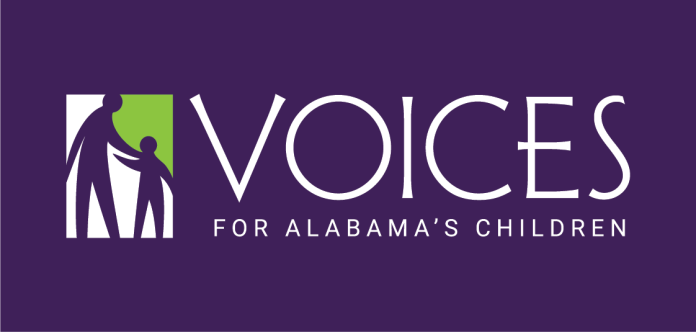MONTGOMERY — Nearly 1 in 5 children in Alabama faced food insecurity at some point in 2021 and child poverty rates have climbed steadily since 2000.
These are just some of the statistics in the 2023 Alabama Kids Count Data Book, released this morning. The report shows how Alabama’s approach to serving children and families has evolved significantly over the last 30 years, resulting in some improvements.
The latest data measuring how children are faring in the state highlights several areas that policy and lawmakers need to prioritize to improve Alabama’s child well-being.
The Montgomery-based, statewide nonprofit VOICES for Alabama’s Children has produced the report annually for 30 years.
“Over the last three decades, the Alabama Kids Count Data Book has empowered child advocates with comprehensive data driving policy changes that have improved child well-being,” said Rhonda Mann, the executive director of VOICES for Alabama’s Children. “From local communities to state and federal levels of government, this data has informed important policy changes helping improve outcomes for children’s health, education, safety, and economic security – the four domains or categories of data measured.”
This year’s publication reports state trends and county-level data on child well-being across the state’s 67 counties. It explores 70 indicators across the four domains.
“Data is a benchmark of where we are and where we have been and sets the stage for transformation,” said Apreill Hartsfield, VOICES for Alabama’s Children’s Alabama Kids Count director. “We note the changes such as the decrease in child population and the growing diversity among our children. We celebrate the areas of improvement including the increase in health care coverage and early intervention services and the decrease in teens not attending school and not working (idle teens).
“And we raise awareness about opportunities for improvement, including infant deaths, child poverty, and food insecurity.”
Statewide highlights in this year’s Data Book include:
- Alabama’s child population decreased slightly from 2021 to 2022, dropping 24.8% to 24.6% of the total population compared to 28.2% in 2000. Hispanic children are the fastest-growing demographic under 20, tripling from 2000 to 2022, and now is 8.5% of the state’s child population.
- Child poverty rates in Alabama have increased steadily since 2000. The increase is seen in all age groups (under age 5, ages 5-11, and 12-17). African American (38.3%) and Hispanic (36.7%) children are affected at more than two times the rate of white children (13.5%).
- In 2021, 18.3% of Alabama children faced food insecurity at some point during the year. This is the U. S. Department of Agriculture’s measure for lack of access to enough food for all household members and limited or uncertain availability of nutritionally adequate foods.
- Early intervention for children birth to three years increased by 39% since 2012, serving 8,236 children in 2021.
- Approximately 97% of Alabama’s children are now covered by some form of health insurance.
- The infant mortality rate has increased slightly from 7.0 deaths per 1,000 live births in 2020 to 7.6 deaths per 1,000 live births in 2021, representing 443 babies who did not live to see their first birthday. Among the major demographic groups, the infant mortality rate is highest for African American babies. African American babies die at a rate of 12.1 per 1,000 live births. By contrast, there were 5.2 deaths per 1,000 Hispanic babies and 5.9 deaths per 1,000 white babies.
- The number of children in foster care in 2023 increased by 16.3% compared to 2015 but remained relatively similar (0.2% increase) to one year ago.
- The percentage of teens not attending school and not working declined from 10.7 percent in 2000 to 8.2 percent for the 2017 to 2021 sample period.
This year’s report includes reflections from child-serving state agencies on how child well-being in Alabama has changed over the last 30 years. In interviews, each state agency leader underscored how collaboration across agencies has improved in recent years and how the Data Book has helped them better pinpoint and address areas of need.
This collaborative effort has yielded notable successes, such as ALL Kids (the state’s children’s health insurance program), the Juvenile Justice Act of 2008, which resulted in a substantial reduction in juvenile incarcerations, a commitment to expanding access to high-quality early childhood education, and other initiatives to enhance mental health services for children and families.
This year’s release of the state Data Book wrapped up the state’s Week of the Young Child celebration.
VOICES held its 10th Annual Child Advocacy Day this week. Child advocates from across Alabama convened in Montgomery to discuss a child care tax credit bill, newly proposed child passenger safety guidelines, and other policies that VOICES believes will improve Alabama’s child well-being.
The advocates also encouraged lawmakers to increase funding for mental health services, grow Alabama’s First Class Pre-K program, and expand the state’s child care Quality Rating and Improvement System.
Don’t miss out! Subscribe to our email newsletter to have all our smart stories delivered to your inbox.



